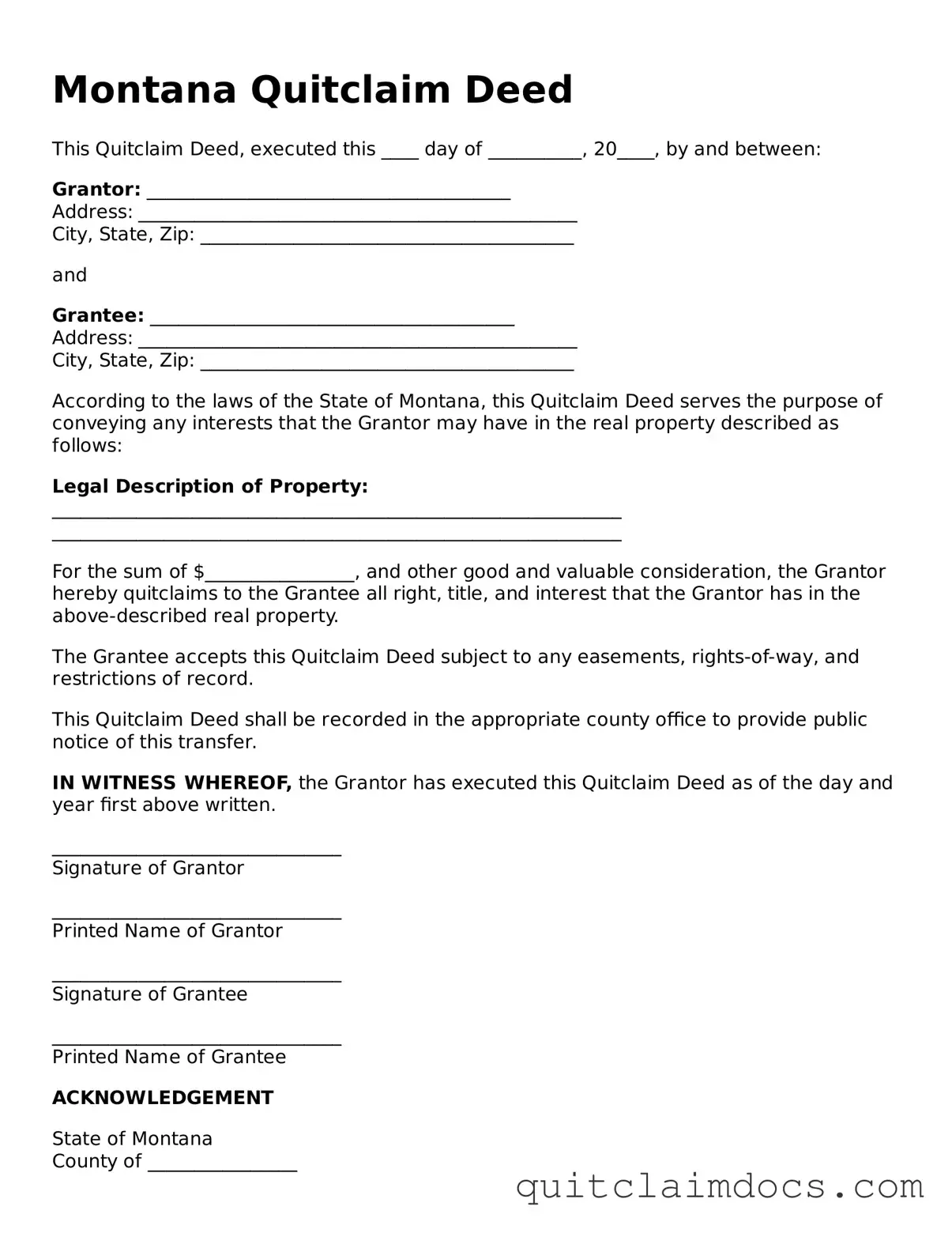Montana Quitclaim Deed
This Quitclaim Deed, executed this ____ day of __________, 20____, by and between:
Grantor: _______________________________________
Address: _______________________________________________
City, State, Zip: ________________________________________
and
Grantee: _______________________________________
Address: _______________________________________________
City, State, Zip: ________________________________________
According to the laws of the State of Montana, this Quitclaim Deed serves the purpose of conveying any interests that the Grantor may have in the real property described as follows:
Legal Description of Property:
_____________________________________________________________
_____________________________________________________________
For the sum of $________________, and other good and valuable consideration, the Grantor hereby quitclaims to the Grantee all right, title, and interest that the Grantor has in the above-described real property.
The Grantee accepts this Quitclaim Deed subject to any easements, rights-of-way, and restrictions of record.
This Quitclaim Deed shall be recorded in the appropriate county office to provide public notice of this transfer.
IN WITNESS WHEREOF, the Grantor has executed this Quitclaim Deed as of the day and year first above written.
_______________________________
Signature of Grantor
_______________________________
Printed Name of Grantor
_______________________________
Signature of Grantee
_______________________________
Printed Name of Grantee
ACKNOWLEDGEMENT
State of Montana
County of ________________
On this ____ day of __________, 20____, before me, a notary public in and for said state, personally appeared _______________________________ (Grantor) and_______________________________ (Grantee), to me known to be the person(s) described in and who executed the foregoing instrument, and acknowledged that they executed the same as their free and voluntary act.
Witness my hand and official seal.
_________________________________
Notary Public
My commission expires: _______________
